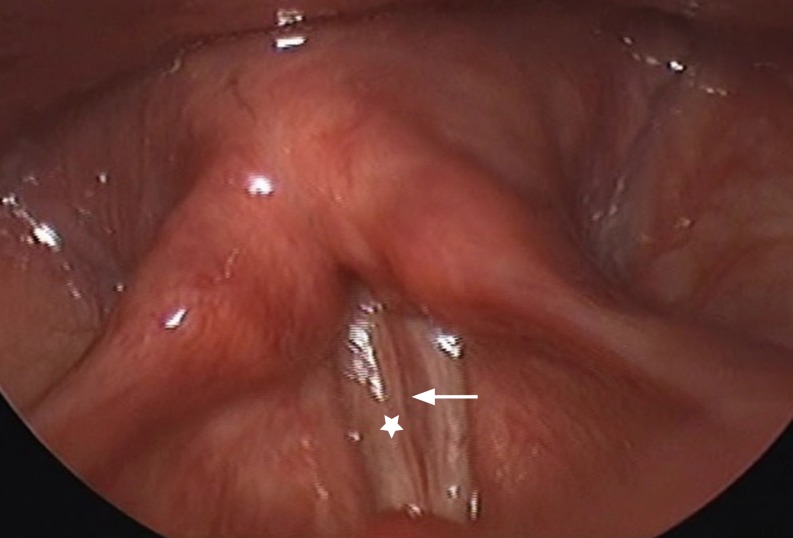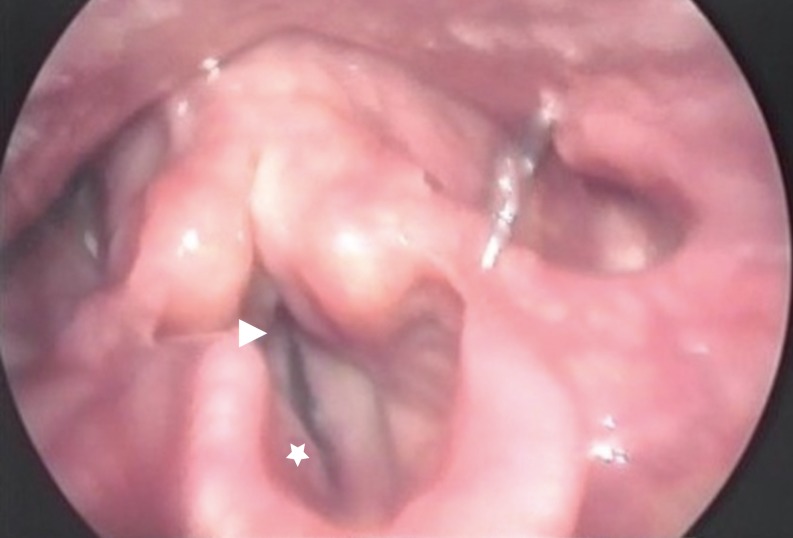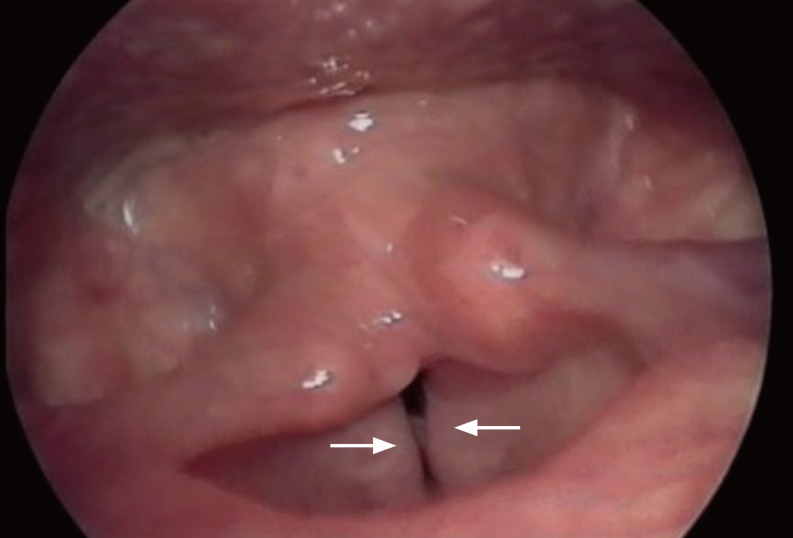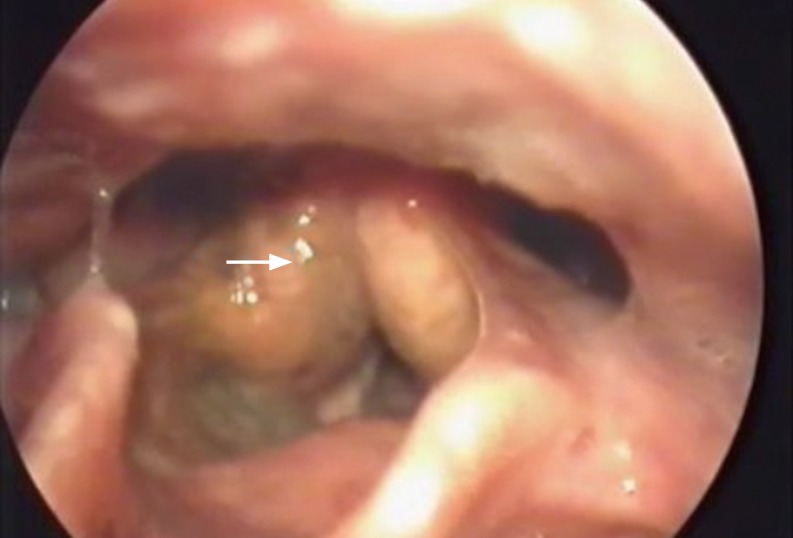Clin Exp Otorhinolaryngol.
2015 Dec;8(4):402-408. 10.3342/ceo.2015.8.4.402.
Laryngeal Compensation for Voice Production After CO2 Laser Cordectomy
- Affiliations
-
- 1Department of Otorhinolaryngology, Military Medical Academy, Cairo, Egypt.
- 2Department of Otorhinolaryngology, Faculty of Medicine, Zagazig University, Zagazig, Egypt. mwenteg@yahoo.com
- 3Phoniatric Unit, Department of Otorhinolaryngology, Faculty of Medicine, Zagazig University, Zagazig, Egypt.
- KMID: 2128918
- DOI: http://doi.org/10.3342/ceo.2015.8.4.402
Abstract
OBJECTIVES
Carbon dioxide (CO2) laser cordectomy is considered one of the modalities of choice for treatment of early glottic carcinoma. In addition to its comparable oncological results with radiotherapy and open surgical procedures, it preserves of laryngeal functions including voice production. The aim of this study was to detect how the larynx compensates for voice production after different types of CO2 laser cordectomy for early glottic carcinoma together with assessment of the vocal outcome in each compensation mechanism.
METHODS
One hundred twelve patients treated with CO2 laser cordectomy were classified according to their main postoperative phonatory site. Perceptual analysis of voice samples using GRBAS (grade, roughness, breathiness, asthenia, and strain) scale was done for 88 patients after exclusion of the voice samples of all female patients to make the study population homogenous and the samples of 18 male patients due to bad quality (4 patients) or unavailability (14 patients) of their voice samples and the results were compared with those obtained from control group that included 25 age-matched euphonic male subjects.
RESULTS
Five types of laryngeal compensation were defined including: vocal fold to vocal fold, vocal fold to vocal neofold, vocal fold to vestibular fold, vestibular fold, to vestibular fold, and arytenoids hyper adduction. Characters changes of voice produced by each compensation type were found to be statistically significant except for breathiness, asthenia and strain changes in vocal fold to vocal fold compensation type.
CONCLUSION
The larynx can compensate for voice production after CO2 laser cordectomy by five different compensation mechanisms with none of them producing voice quality comparable with that of controls.
Keyword
MeSH Terms
Figure
Reference
-
1. Koufman JA. The endoscopic management of early squamous carcinoma of the vocal cord with the carbon dioxide surgical laser: clinical experience and a proposed subclassification. Otolaryngol Head Neck Surg. 1986; 12. 95(5):531–537. PMID: 3108790.
Article2. McGuirt WF, Blalock D, Koufman JA, Feehs RS. Voice analysis of patients with endoscopically treated early laryngeal carcinoma. Ann Otol Rhinol Laryngol. 1992; 2. 101(2 Pt 1):142–146. PMID: 1739259.
Article3. Cragle SP, Brandenburg JH. Laser cordectomy or radiotherapy: cure rates, communication, and cost. Otolaryngol Head Neck Surg. 1993; 6. 108(6):648–654. PMID: 8516002.
Article4. Myers EN, Wagner RL, Johnson JT. Microlaryngoscopic surgery for T1 glottic lesions: a cost-effective option. Ann Otol Rhinol Laryngol. 1994; 1. 103(1):28–30. PMID: 8291856.
Article5. Brandenburg JH. Laser cordotomy versus radiotherapy: an objective cost analysis. Ann Otol Rhinol Laryngol. 2001; 4. 110(4):312–318. PMID: 11307905.
Article6. Brondbo K, Benninger MS. Laser resection of T1a glottic carcinomas: results and postoperative voice quality. Acta Otolaryngol. 2004; 10. 124(8):976–979. PMID: 15513536.7. Eckel HE, Thumfart W, Jungehulsing M, Sittel C, Stennert E. Transoral laser surgery for early glottic carcinoma. Eur Arch Otorhinolaryngol. 2000; 4. 257(4):221–226. PMID: 10867839.
Article8. Nunez-Batalla F, Diaz-Molina JP, Coca-Pelaz A, Suarez-Nieto C. Voice outcomes after laser cordectomy. J Laryngol Voice. 2011; Jan-Jun. 1(1):6–11.
Article9. Mitrovic SM, Jovancevic L. The voice of patients with laryngeal carcinoma after oncosurgery. Arch Oncol. 2005; 7. 13(2):76–78.
Article10. Remacle M, Eckel HE, Antonelli A, Brasnu D, Chevalier D, Friedrich G, et al. Endoscopic cordectomy: a proposal for a classification by the Working Committee, European Laryngological Society. Eur Arch Otorhinolaryngol. 2000; 4. 257(4):227–231. PMID: 10867840.
Article11. Kotby MN. The accent method of voice therapy. San Diego (CA): Singular Publishing Group Inc.;1995.12. Kotby MN. Voice disorders: recent diagnostic advances. Egypt J Otolaryngol. 1986; 3(10):69–98.13. Haddad L, Abrahao M, Cervantes O, Ceccon FP, Gielow I, Carvalho JR, et al. Vocal assessment in patients submited to CO2 laser cordectomy. Braz J Otorhinolaryngol. 2006; May-Jun. 72(3):295–301. PMID: 17119763.14. Sjogren EV, van Rossum MA, Langeveld TP, Voerman MS, van de Kamp VA, Baatenburg de Jong RJ. Voice profile after type I or II laser chordectomies for T1a glottic carcinoma. Head Neck. 2009; 11. 31(11):1502–1510. PMID: 19431198.
Article15. Krengli M, Policarpo M, Manfredda I, Aluffi P, Gambaro G, Panella M, et al. Voice quality after treatment for T1a glottic carcinoma: radiotherapy versus laser cordectomy. Acta Oncol. 2004; 43(3):284–289. PMID: 15244253.
Article16. Motta S, Cesari U, Mesolella M, Motta G. Functional vocal results after CO2 laser endoscopic surgery for glottic tumours. J Laryngol Otol. 2008; 9. 122(9):948–951. PMID: 18039419.
- Full Text Links
- Actions
-
Cited
- CITED
-
- Close
- Share
- Similar articles
-
- Voice Outcome and Quality of Life after Laser Cordectomy in Glottic Cancer
- Recurrent Glottic Cancer Treated with Carbon Dioxide Laser: A Case Report
- Voice Evaluation after Laser Resection of Early Glottic Cancer
- Comparison of Radiotherapy with Laser Cordectomy for T1 Glottic Cancer
- Transoral CO2 Laser Resection for Post-Radiation Arytenoid Edema






